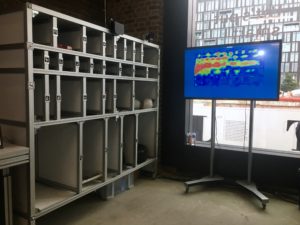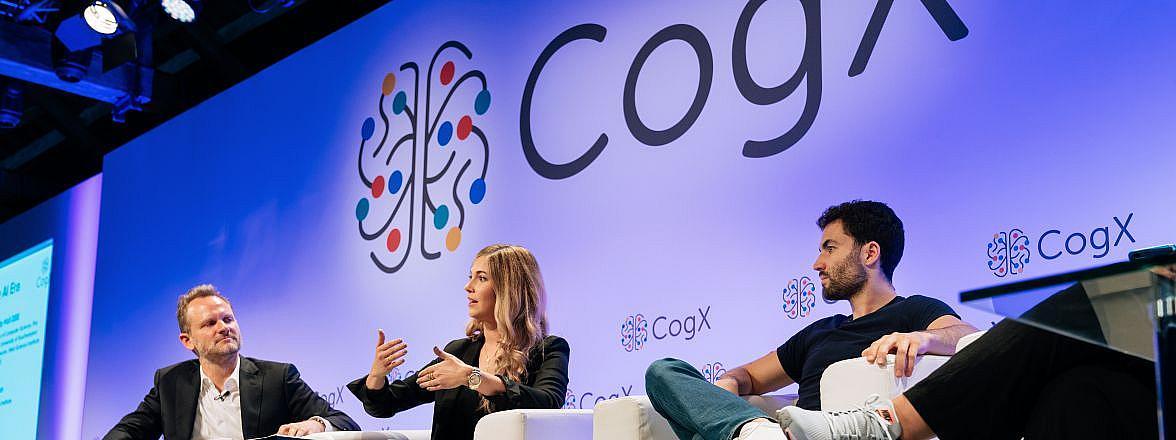King’s Cross (London) just hosted the world’s largest festival for AI and emerging technology, bringing together top speakers from across business, government, academia and culture. Artificial intelligence is increasingly presenting innovative opportunities for how we run our businesses, how we do our jobs, and how we serve our customers. As increasingly advanced algorithms enable us to collect, process and implement data with greater flexibility, ease and precision, we need to consider how we are applying the latest advances to better manage our efforts and benefit whom we serve.
This article was originally published on LinkedIn Pulse. If you enjoy it, please consider liking, commenting and sharing it with your professional network.
Based on some of the most exciting exhibitors I spoke to, here are my top three insights from CogX 2019 and considerations for how you can begin to apply them.
Data collection is now cheaper, faster and more granular
What systems do you have in place to ongoingly collect information about your customers? What level of detail does it provide you with, and does it give you a sense of the full picture?
We often have to rely on self-reported data to gain insight into our customers’ experience. The issue with this approach? The feedback we receive tends to be from the most emotionally-motivated people: the most satisfied and the most dissatisfied. Measuring all that comes between – in particular, indifference – appears largely elusive.
With AI, it’s possible now to capture the full nuance of the customer experience. Sensing Feeling’s approach particularly impressed me, using facial tracking technology to recognise emotional states in real time without collecting personal data. From deducing where customers get most frustrated in stores, to determining the highest points of audience engagement in shows, to regulating fatigue in industrial workplaces, the potential for AI-powered data collection is immense.
Given the emerging future of data collection, how can you harness new technologies to inform your understanding of your customer experience? What are you doing right now? What are the next steps for you or your organisation to take?
Data interpretation is now quicker, simpler and more illuminating
How do you process the data you collect? How effective are the measures you currently employ? Are you maximising the utility of your data?
The value of the information that you collect is determined by your ability to derive insight from it. The insight you receive is dependent on the software you use, the way you display your data, and the competency of the analyst – which, in smaller organisations, can often be ourselves or a colleague in smaller organisations. Depending on how we process and interpret data, we risk missing important relationships between variables that indicate the key areas to invest more of our efforts.
With AI, it’s increasingly possible to effectively extrapolate data and expose key patterns. VIRTUALITICS’ AI-driven software impressed me with its ability to process thousands of data points to produce a detailed, interactive 3D chart that visualised the strongest correlations between demographics, consumer behaviours and key performance indicators in a virtual reality interface. As our computing power grows more and more, we are increasingly discovering how to interpret data in richer ways and in less time than before.
The ways we can manipulate and extract knowledge from our data is expanding. How can you extrapolate data to better inform how you deliver on your key business promises? Where do you stand right now? What strategic links are you yet to make?
Data implemention is now more immediate, effective and automated
What position are you in to actively utilise the insights you receive from data? How do you act on the feedback you receive?
We ongoingly collect useful and actionable data, yet we are not always certain about how to implement it effectively. Whether it be in evaluating the efficacy of trainings, investigating bottlenecks in manufacturing or revitalising employee engagement, it is not uncommon to find ourselves “too busy chopping down the tree to sharpen the axe.” Being able to seamlessly collect data and put it to work can be critical to upping productivity and refining our competitive edge.

With AI, it’s possible to collect and implement feedback on performance in real time. The most fun I had at CogX was with The University of Sheffield Advanced Manufacturing Research Centre’s “Intelligent Kitting” storage technology, which pairs shelved components with distinctive RFID tags for identification. As a responsive system, the AI is capable of illuminating where parts are located in response to questions and, more impressively, actively relays a “heat map” of the most accessed components over time – allowing for more effective reorganisation of components based on which are ongoingly used the most.
It’s increasingly easier to adapt and improve the way we work in real time. How can you build adaptive, strategic implementation processes into your services? What are your current practices for innovation? What could be the next step to take?
Key takeaways.
What do AI and emerging technology have in store for businesses? Here are the key points to remember:
- Data collection is yielding deeper insights into what customers do, and you can use this to inform how you present and deliver your offerings.
- Data interpretation is accelerating the rate with which we can identify key strengths and weaknesses, and you can use this to heighten your awareness of where to focus your efforts.
- Data implementation is becoming more automatic and systematised, and you can use this to adapt and improve the way you work in real time.
With how fast technology is evolving, I look forward to what CogX 2020 has in store. What aspect of AI do you believe is going to most impact the way we do business?








Leave A Comment
You must be logged in to post a comment.